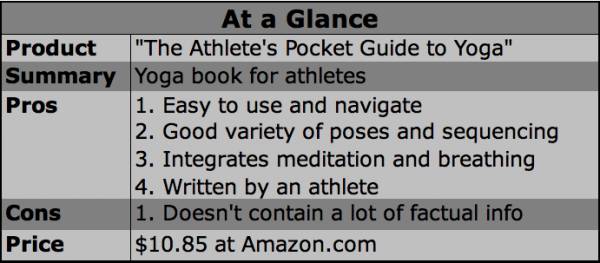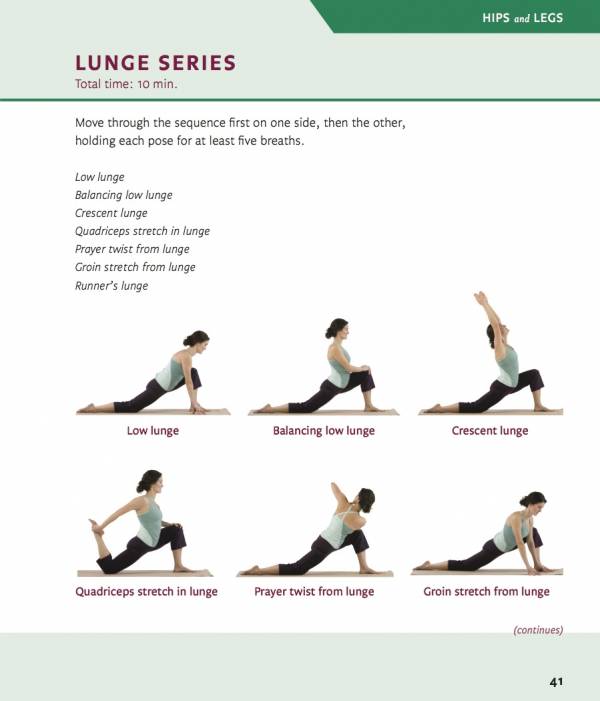

At this point most athletes know that yoga can have dramatic benefits for performance. Regular yoga practice has been shown to improve muscular endurance, recovery, and strength.
For example, a 2009 study found that just twelve weeks of regular yoga improved shoulder, groin, and hamstring range of motion in NCAA Division I intercollegiate baseball players. Many professional athletes integrate yoga into their training as a form of active recovery.
Nevertheless, despite all the evidence, it can still be difficult to fit yoga into training.
If you’re an athlete looking for a straightforward, informative guide to yoga, The Athlete’s Pocket Guide to Yoga is for you. This book was written by former Team USA triathlete Sage Rountree.
The book is portable, easy to read, and informative. It includes a short informational segment followed by a thorough guide through yoga poses and sequences for athletes. There are a lot of things I really like about this book. Here are three that struck me right away:
1. Easy to Navigate
I’ve read several yoga yoga books that were difficult to navigate. While many of these were informative, not all of them were practical for use during sequences.
The Athlete’s Pocket Guide to Yoga is divided into several different segments, which are each marked with tabs for easy navigation. The routines at the end of the book list the page numbers for each pose in any given sequence. However, it would be nice to have an index at the end of the book to look up specific poses.
2. Comprehensive
Yoga is an endless topic, and Sage does an excellent job of covering all the bases, especially considering how compact her book is.
She includes routines for strength, power, flexibility, and focus – all of which are crucial for the athlete. She also provides a nice list of resources in the back for anyone who wants to do further reading and research on yoga for athletes.
3. Integrates Meditation
I was happy to see that Sage didn’t simply list a bunch of yoga poses without addressing the mental training involved in yoga. To my mind, this is one of the greatest benefits yoga has to offer athletes.
Sage has a chapter devoted to breath exercises and meditations. She also provides concrete recommendations for athletes who are just beginning their meditation practice.
For example, in the beginning of the book Sage offers the following recommendation: “One lowball rule of thumb would be to spend x amount of minutes per day in meditation, where x is equal to the number of hours you train per week.” This kind of concrete advice provides a good starting point for newcomers.

Sage offers some practical tips for getting started with your yoga practice in the first section, but the majority of the book is devoted to photo demonstrations of yoga poses and sequences.
If you’re interested in the theory and research behind yoga for athletes, check out Sage’s book, The Athlete’s Guide to Yoga, which provides detailed information on the origins and benefits of yoga for athletes.
Overall, I recommend The Athlete’s Pocket Guide to Yoga to anyone looking for a practical, easy- to-follow guide to yoga for athletes.
“The Athlete’s Pocket Guide to Yoga” is available for $10.85 at Amazon.com.
Images reprinted with permission of VeloPress from “The Athlete’s Pocket Guide to Yoga.” Learn more at VeloPress.






